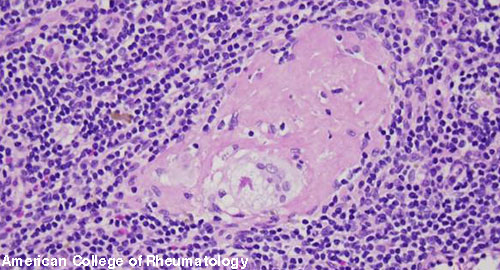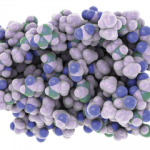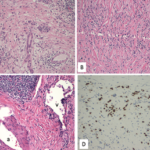 Both rheumatoid arthritis and sarcoidosis result from a heightened immune response to a panel of inflammatory stimuli. In the case of sarcoidosis, the response to vimentin, a cytoskeletal protein, appears to play a role in pathology. Although sarcoidosis is typically diagnosed on the basis of subjective information, an in vivo skin assay, the Kveim test, has also proved useful.
Both rheumatoid arthritis and sarcoidosis result from a heightened immune response to a panel of inflammatory stimuli. In the case of sarcoidosis, the response to vimentin, a cytoskeletal protein, appears to play a role in pathology. Although sarcoidosis is typically diagnosed on the basis of subjective information, an in vivo skin assay, the Kveim test, has also proved useful.
Physicians perform the Kveim test using Kveim (Kv) reagent, a homogenized, heated suspension of sarcoidosis spleen tissue. The Kv reagent stimulates the formation of granulomas, but the mechanism behind this process is not well understood. However, the resulting skin reaction has been clinically validated for the diagnosis of sarcoidosis. After patients are diagnosed with sarcoidosis, they are treated, sometimes with immunosuppressive therapies.
Although clinicians do not completely understand the Kv reaction, they have noted that peripheral blood mononuclear cells (PBMCs) from human immunodeficiency virus (HIV)-positive patients who do not have sarcoidosis also respond to the Kv reagent by producing pro-inflammatory cytokines, suggesting that HIV and sarcoidosis may be related via the persistent secretion of pro-inflammatory cytokines.
Christian Eberhardt, MD, of the Imperial College London in the U.K., and colleagues investigated the Kv response in patients with newly diagnosed pulmonary sarcoidosis and published their results on Jan. 23, 2017, in PLOS ONE.1 The researchers first stimulated PBMCs from patients with sarcoidosis, as well as healthy volunteers with both sarcoidosis Kv (sKv) and healthy control spleen prepared in a manner similar to Kveim (cKv). The mean IFN-ɣ concentration was significantly higher in the cell culture supernatant from patients with active pulmonary sarcoidosis stimulated with sKv relative to cKv. In addition, the investigators found that, when they stimulated PBMCs from sarcoidosis patients with Kv reagent, they were able to induce a specific pro-inflammatory cytokine response (increased IFN-ɣ and TNF-α) that was not seen in PBMCs from healthy volunteers who were stimulated with Kv reagent.
The researchers then extracted proteins from eight historical diagnostically in vivo validated Kv (vKv) samples, six sKv samples and seven cKv samples, and used proteomic approaches to identify 74 sarcoidosis tissue-specific proteins—three of which were in higher abundance in sarcoidosis spleen relative to control spleen: vimentin, tubulin and alpha-actinin-4. In particular, the investigators identified high levels of vimentin in three historical vKv samples and one prepared sKv sample. Moreover, immunohistochemical staining of spleen tissue revealed that vimentin was localized to tissue granulomas of sarcoidosis, but not healthy spleens.
When the team stimulated sarcoidosis PBMC with these three candidate proteins, they found that vimentin—but not tubulin or alpha-actinin-4—could stimulate a strong IFN-ɣ and TNF-α response similar to that observed with stimulation by Kv. Likewise, vimectin did not stimulate production of IL-1 or IL-6. The investigators hypothesized that vimentin acts as a mycobacterial-derived antigenic peptide to upregulate the cytokine responses from sarcoidosis PBMCs.


